HIDIZS MS5 IEMs – 4 BA, One Dynamic, And A Lot Of Fun
HIDIZS MS5 is a $399 USD pair of In-Ear Monitors with 5 Drivers playing for each ear, a replaceable pneumatic sound tuning filter, and with a detachable cable, coming in a premium package. Given the price point, they will be compared to other high-quality midrange IEMs, including Xenns Magird Tea2, Unique Melody 3DT, Earsonics Corsa, and Westone MACH 60.
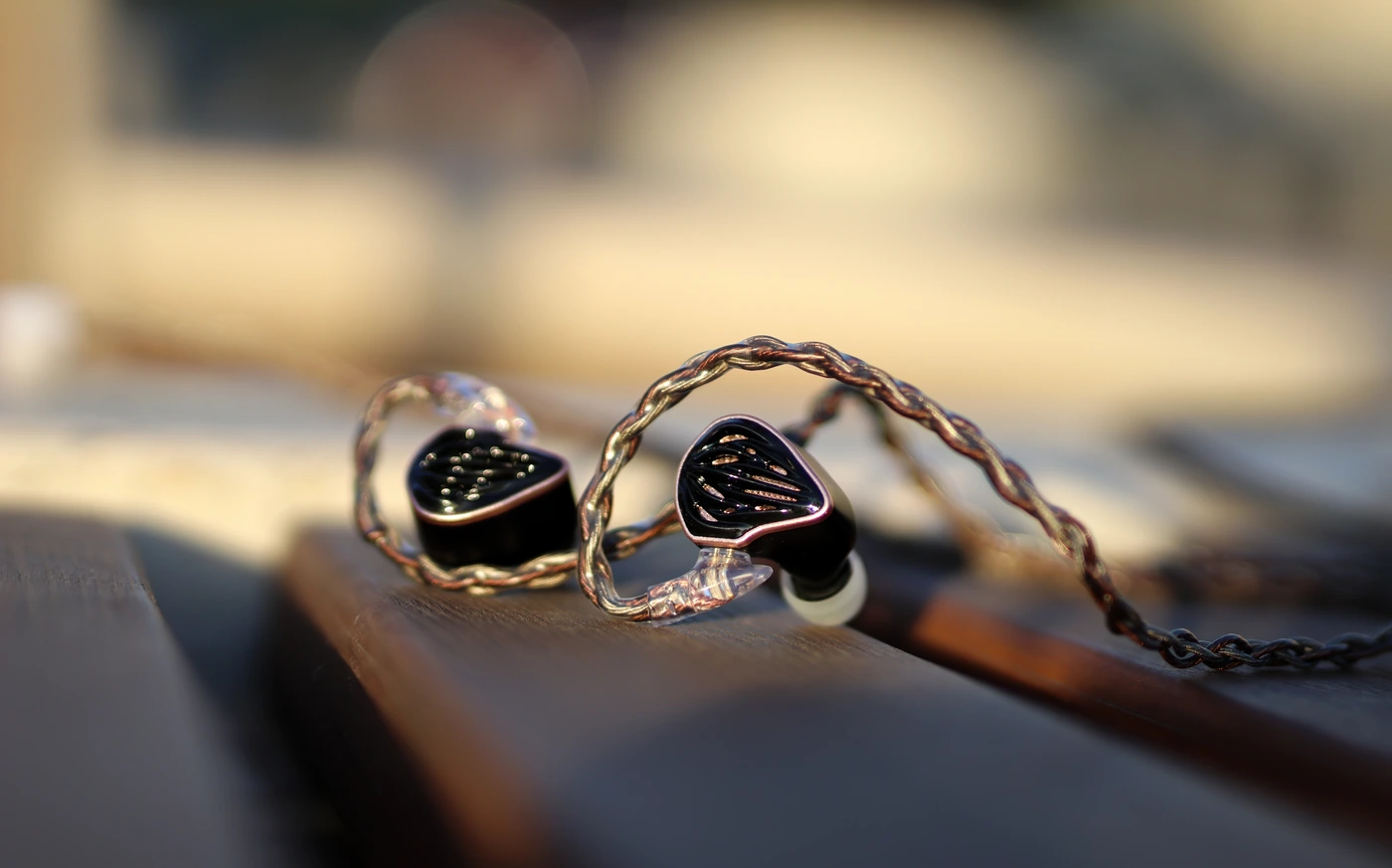
Introduction
HIDIZS is one of the most popular companies designing IEMS and Earphones, but they’re first known for their excellent mini DAPs and dongle DACs, having been around ever since I started reviewing back in 2016. The company has seen a lot of products, made a lot of fans and friends along the way, but they never before made a high-end IEM or anything that resembles the new HIDIZS MS5, this being their first real product that comes close to being truly high-end, the pricing of 399 USD placing it in the upper midrange zone / lower high-end level. This means that if they manage to deliver on all fronts, we can expect to see some more exciting products for those who already have a good collection at home and desire to step up their game with more interesting IEMs and sources. HIDIZS products are available on their own website, and Amazon too, both being great sources to purchase from. They also sell their products through Linsoul as well as other shops, so you shouldn’t ever run out of options to purchase from, the best option being the one that’s closest to your heart. If you want to help me out and if you like my work, Amazon is the place to order from, using the links in this review, and otherwise the HIDIZS shop is a great option too.
It should be noted that I have absolutely no affiliation with HIDIZS, I am not receiving any incentive for this review or to sweeten things out. I’d like to thank HIDIZS for providing the sample for this review. Every opinion expressed is mine and I stand by it. The purpose of this review is to help those interested in the HIDIZS MS5 IEMs Earphones find their next music companion.
Product Link
You can grab one from www.amazon.com here: https://amzn.to/45jsDNZ
If you’re in the UK, you can grab one from www.amazon.co.uk here: https://amzn.to/3QPa8wK
And if you’re from Europe, you can grab one from www.amazon.de here: https://amzn.to/3ONsZ8u
Build Quality/Aesthetics/Fit/Comfort
Starting with the build quality, we have a new liquid silicone dynamic driver powering the sound, although HIDIZS does not disclose whether this is a ultra-wide-band or just here for the bass and the low end. The driver dome is made of kevlar just 0.03mm in thickness, surrounded by this liquid silicone material. To accompany this dynamic driver, we have 4 balanced armatures, from Sonion from Denmark. Those are E50DT for the high-end frequencies, 2389 for the midrange frequencies, and two 17A003 drivers for the low end. Those really help give more texture, presence and although HIDIZS doesn’t present how the crossover is handled, it feels like either they’re using a high-end piece or the drivers are matched to have non-overlapping frequencies.

HIDIZS also boasts using a special unique soldering process, which has gold composites for the soldering, and this is quite nice, since gold doesn’t corrode. You can also tune up the MS5 with three different filters, red, silver and rose in color. Those have a considerable impact on the sound, and they are based on acoustic damping of the sound using cotton filtering pads. Most of today’s review has been written using the balanced tuning filters, which are the rose gold / copper colored ones. Silver makes music brighter and filters the low end somewhat, while Red filters the treble quite a lot resulting in a pretty rolled off sound with less detail and a smaller perceived soundstage.
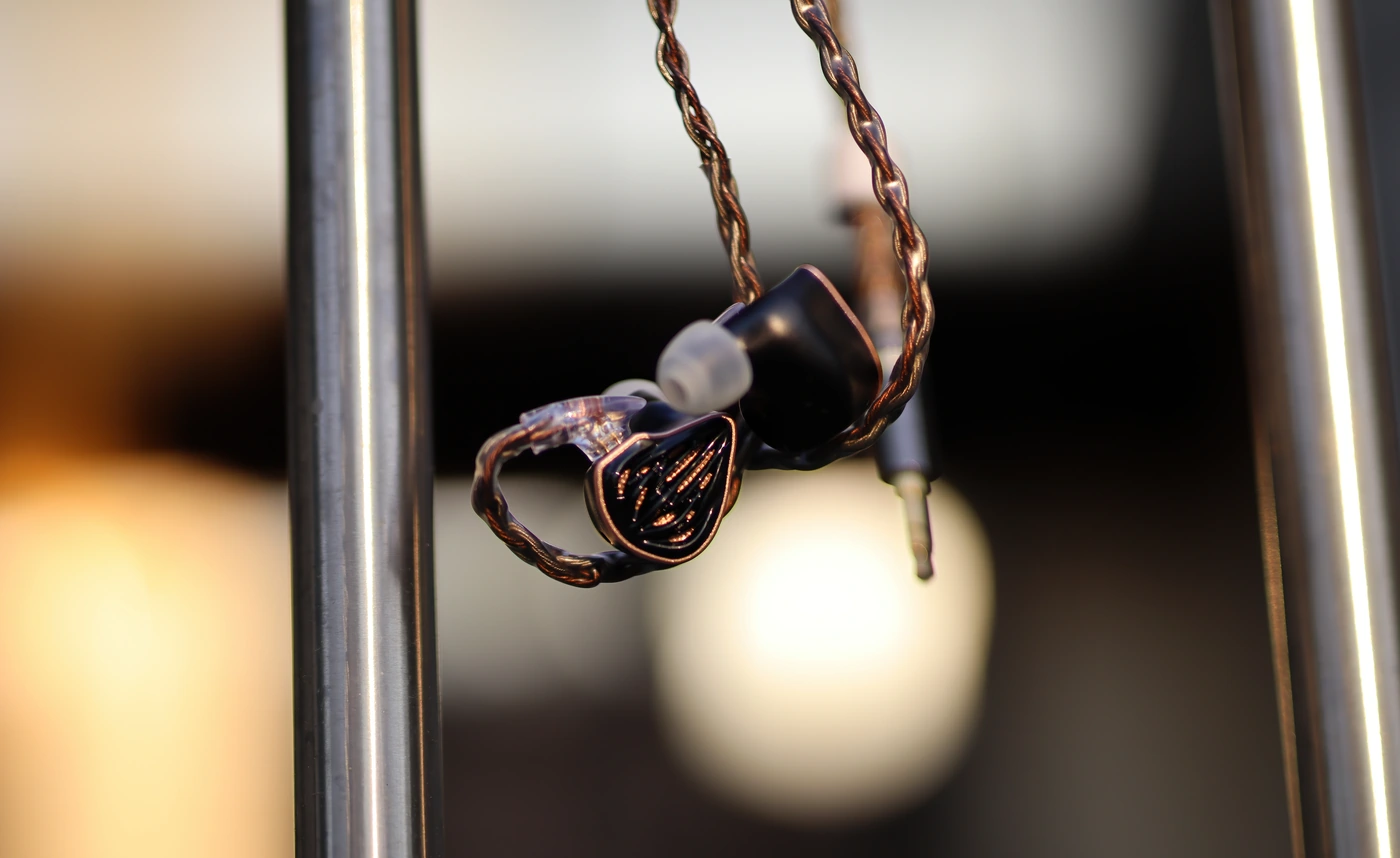
The shape of MS5 is interesting, they are incredibly comfortable in practice, and the outer shell looks like they would be semi-open, but they actually isolate really well from the outside noise, with in between 22 and 28 dB of passive noise isolation, depending on the frequency. The inner shell is made of aluminum, and it is anodized with aluminum oxide for the best resonance and hardness, while keeping it as thin and light as possible. The outer shell is made of resin that’s friendly with the skin, and it has what HIDIZS calls an Angel Wing shape that has a golden texture beneath to create a better looking IEM. To give you some idea of how well it isolates from the outside noise, I cannot hear myself typing at my computer, and the level of isolation works great for basically anything. The cable is of an incredible quality, it is a thick, braided cable that looks imposing, but it gives the only thing I could consider a disadvantage for MS5, which is that the cable coils really tightly around the ears. This leads to a snug fit that you can keep even if you run or do activities, but it is not quite as comfortable as a looser fitting cable. The cable is made of 504 6N crystal copper silver-plated wires, and 6N single crystal copper wires, to form 8 strands of a braided wire. It ends in a 3.5mm single ended gold plated jack. The cable does not conduct microphonic noise at all, it is not tangle prone, nor springy, but it is somewhat heavy.
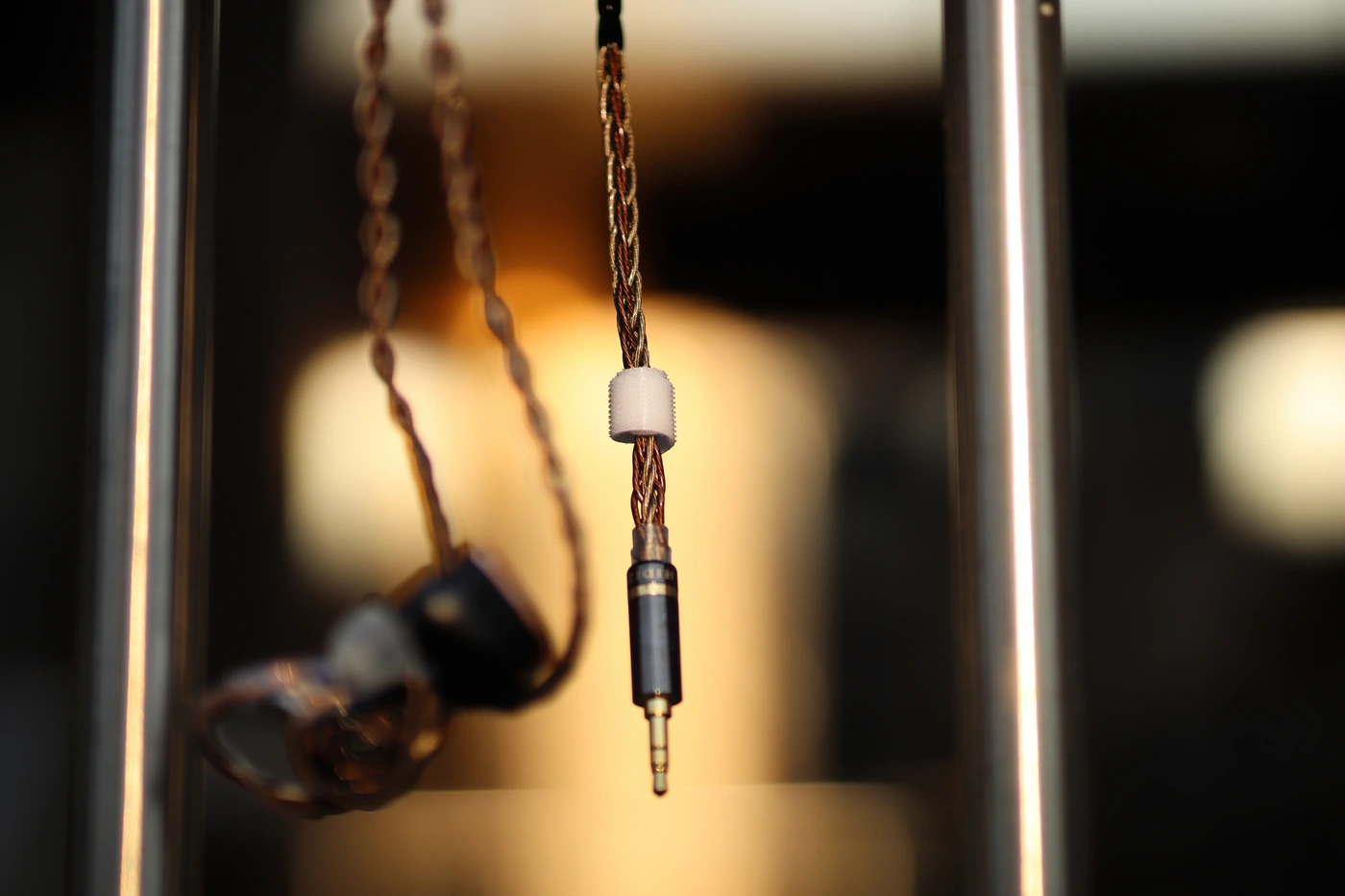
Theoretically, we have a problematic IEM here, because the impedance is incredibly low, at 5.3 OHMs, so it would theoretically suffer from hissing and background noise, and with a SPL of 104 dB, it is theoretically hard to drive, but I found it to be ok to drive from most portable sources, including most dongles and portable DAPs, plus it actually does not have a lot of hissing or background noise. All in all, using MS5 is fun, it comes with a nice package and feels like a proper high-end IEM.
Sound Quality
For today’s review I decided to pair HIDIZS MS5 with a wide selection of sources, including Hiby R2 II, Aune S9c PRO, iBasso DX320 MAX TI, Shanling UP4 2022, HIDIZS XO DAC, HIDIZS ap80 PRO X, Astell & Kern ACRO CA1000T, and HIFI Walker H2 Touch. Overall, all of those sources can drive HIDIZS MS5 really well, and none of them doesn’t present high levels of hiss, with the exception of ACRO CA1000T, which has a pretty high output impedance, but other Astell&Kern DAPs do not have this problem, so SE180 and SP2000T will work just fine and will have no hiss or background noise with MS5. With FiiO K9 PRO, I find myself sitting with the volume wheel between 1 o’clock and 12 o’clock with the high gain and everything else maxed out digitally, so MS5 is somewhat hard to drive, and will require a powerful source to sound its best, but most dongle DACs will be more than enough, it is just laptop headphone output and some integrated solutions that will not be as great. Asus ROG 7 at maximum volume is more than enough. I tend to prefer a brighter / more neutral source with MS5 above warmer sounding sources, and FiiO K9 PRO is better than Matrix mini-i PRO 4 sonically, although both have zero background noise with MS5.
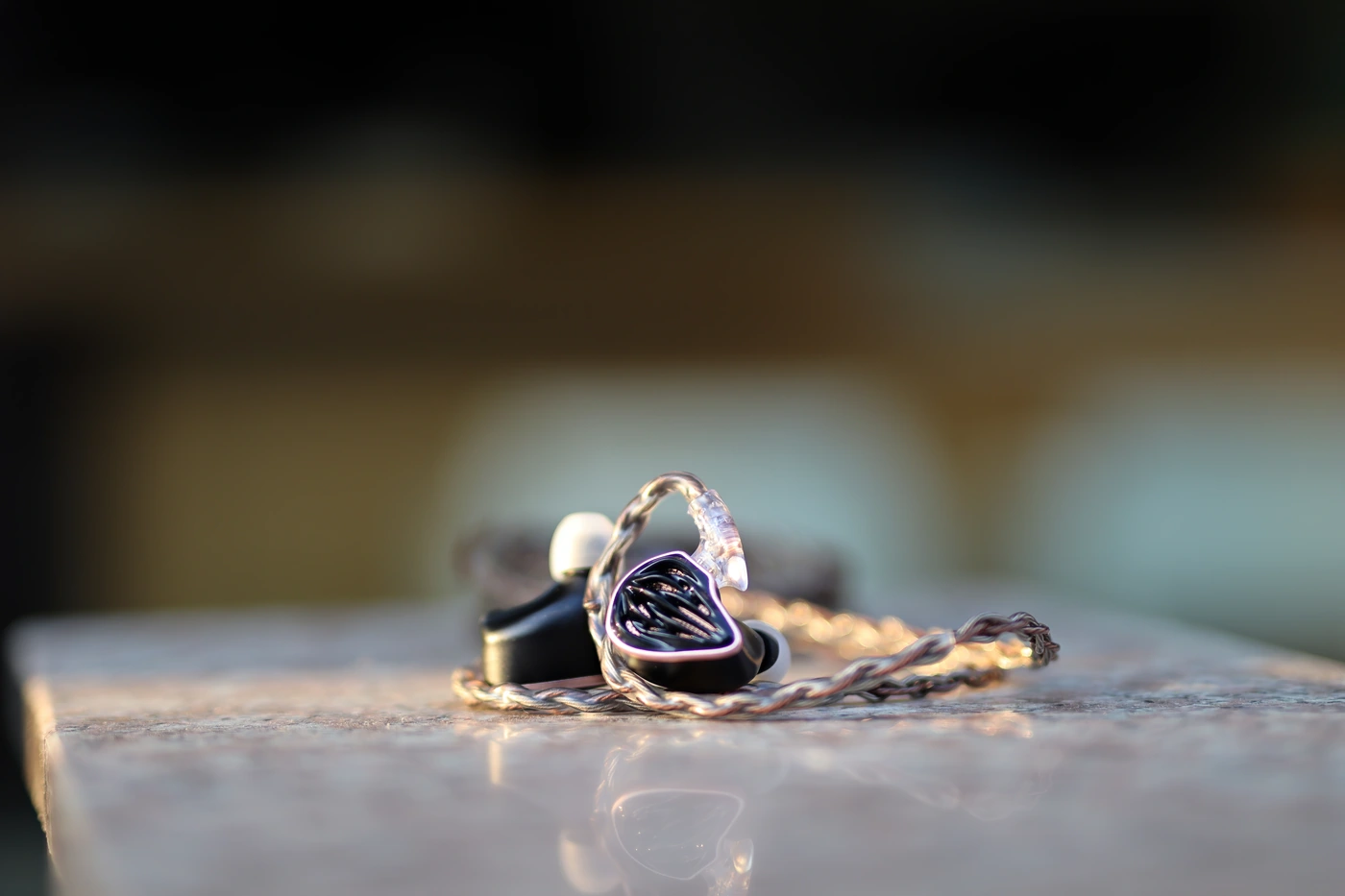
The overall signature can be described as natural, U-Shaped inspired, with a strong low end bass, strong bass, natural sounding midrange, and a sparkly, energetic treble. The soundstage is quite surprising, it has a natural size, but the instrument separation is quite excellent, and there’s a really good sense of resolution in all frequency ranges. The midrange is really rich, detailed and clean, with no distortion regardless of the volume, and MS5 handles dynamics really well.
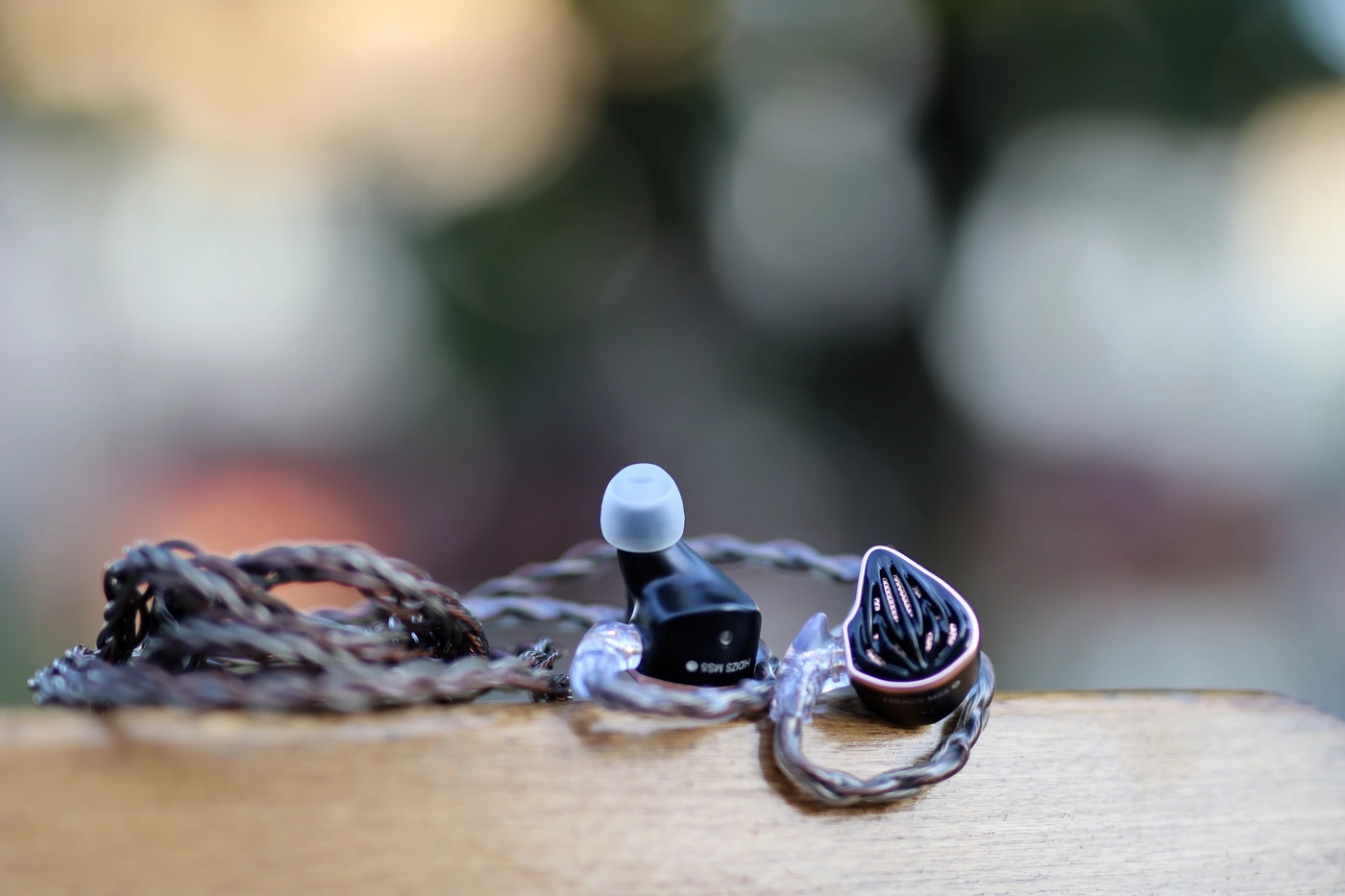
The bass of MS5 is super impressive, as it is one of the very few IEMs out there that can actually play sub bass nicely, and they totally can reach 20 Hz, having a lot of energy in the sub lows range. The bass has most energy between 20 Hz and about 75 Hz, above which the bass tends to become leaner, to avoid a boomy or a veiled sound. Ms5 has the kind of bass that plays along with the midrange, and gives substance and fundamentals to instruments without thickening or adding unwanted boominess to instruments. The bass is natural in speed, can sound big, wide and slow if the music is presented as such, or pumpy, punchy, and impactful for music that is supposed to sound as such. The upper bass is not super present, but it is enough to give male voices presence, power and depth, so music never sounds thin or sucked out. The bass is one of the most impressive, hardest hitting, heaviest found in an IEM, regardless of the price range, and can easily compete with Metalure Wave and IMR Dark Matter in quantity, yet HIDIZS gave MS5 a more nimble, cleaner bass than both of those.
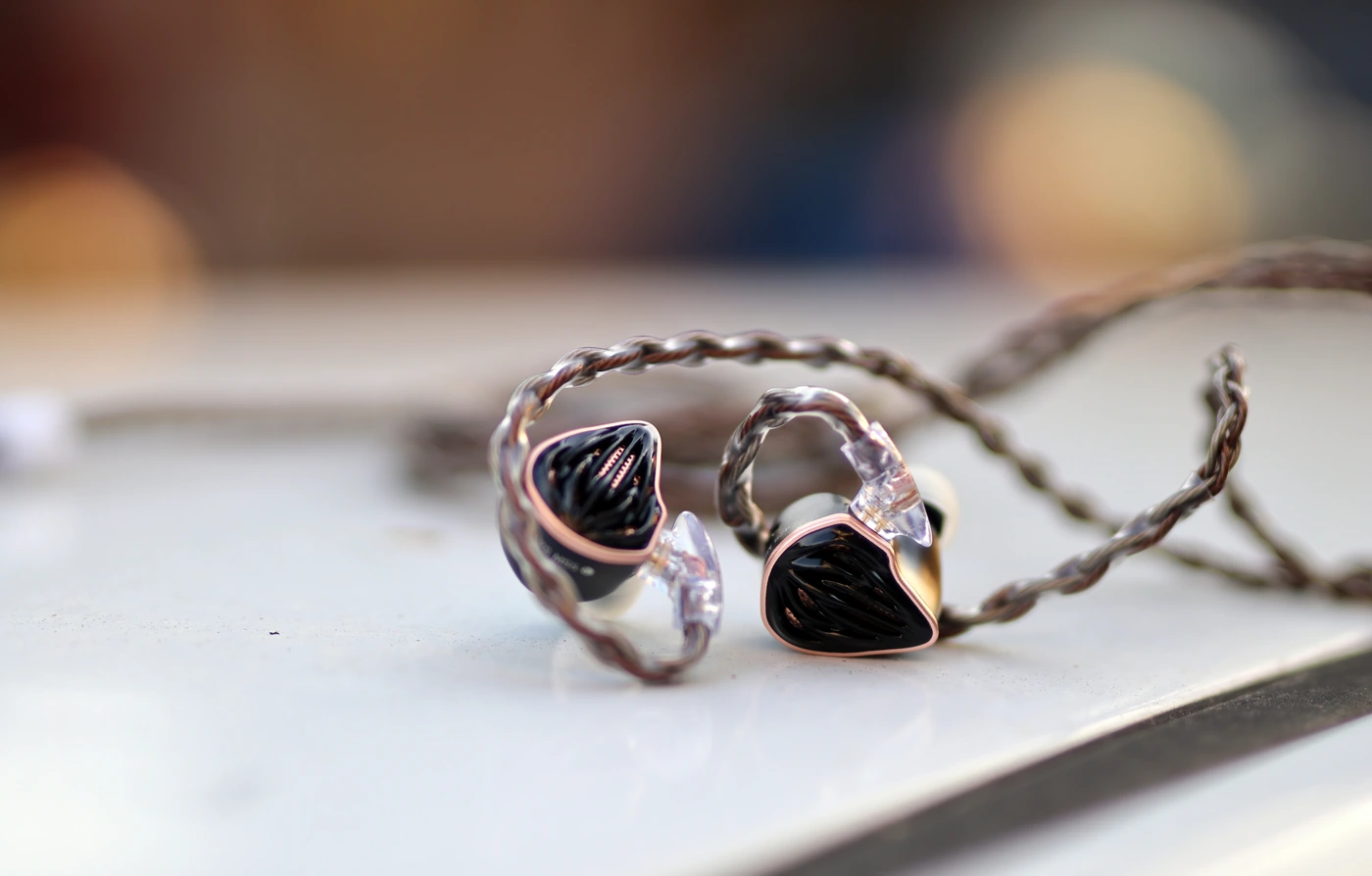
The midrange of HIDIZS MS5 is clean, detailed and deep, with a good sense of space. It feels slightly recessed compared to the sub lows and the treble, but it is very rich and has outstanding instrument separation. HIDIZS MS5 is one of those IEMs that makes it really easy to understand lyrics in songs and has good handling of dynamics, giving a more vivid presentation to commercial, rock and generally dynamically compressed music. The midrange texture is very natural, it is not an overly smooth or overly harsh / hard sounding IEM, handling things as you’d expect music to sound in reality. The increased fundamentals from the stronger bass and low end gives music a good sense of presence and a forward presentation. All in all, the sound of MS5 is very engaging, and although the midrange is the most recessed part of the sound, it doesn’t have any kind of unnatural dip or peak, instead being very coherent and present where it matters. MS5 tends to give synths and guitars the most forward presentation and most vivid sound, and it compliments both male and female voices equally.

The treble is generally slightly uplifted above the midrange, and it has more uplift the higher you go in frequency, so it is not the upper midrange or the lower treble that is uplifted, leading to a very fatigue-free sound that’s still forward, bright and present. The treble tends to be slightly smooth in texture, which gives music a very harshness-free sound, and although you clearly hear every single cymbal crash, both major and minor, it is never fatiguing, and you never grow tired of it. Ms5 sounds like most super high-end flagship IEMs sound like when it comes to how gently each frequency range is handled. The detail is also at least in line with most of the competition from the price range.
Comparisons
HIDIZS MS5 vs Unique Melody 3DT (399 USD vs 400 USD) – Starting the comparison list with a competitor that has outstanding resolution and detail, and the widest soundstage you can find in the entry-level range, the build quality is similar between them, and despite the tight cable coiling around the ear on MS5, I find it more comfortable than 3DT, since the shells are smaller and they have more space in my ears. The overall tuning and sound is very different, with 3DT having a much stronger U-Shape influence, a stronger sub bass, a stronger treble, and more recess in the midrange. This means that MS5 is much richer in the midrange, has more presence for voices, and a much cleaner / clearer sound in the mids, which makes it easier to hear detail, and so it seems more resolute. The soundstage is more natural as painted by MS5, it does not extend as wide as 3DT, and the treble is softer by comparison, it does not feel as aggressive and fatiguing. Overall, MS5 is more natural in every sense possible, 3DT is more recommended if you want a wider staging, and if you want a more U-Shaped sound, while MS5 is more recommended if you want a U-Shaped influenced natural sound with strong bass, strong treble, but natural midrange and a good sense of dynamics, detail, and with superior richness in the mids. 3DT seems to reveal source hiss much more easily, but both need a somewhat strong source to reach their full potential.

HIDIZS MS5 vs Earsonics Corsa (399 USD vs 450 USD) – Earsonics Corsa has an underwhelming package by comparison, so MS5 wins big time with the transport case, pneumatic filters, as well as the exceptional cable it comes with from the factory. The comfort is good with both, better with MS5 since the shape is more ergonomic, and the shells are smaller, although the deeper fit is slightly worse. Both are easy to drive in the long run, but MS5 is a bit harder to drive, but also less sensitive to source hiss and source noise. The overall presentation is much more natural for Earsonics Corsa in the midrange, but the midrange is the forward element in its signature, so it has less dynamics, less punchiness and sounds less engaging than HIDIZS MS5. This means that MS5 will sound deeper, with a bigger, wider, deeper soundstage, better instrument separation, better overall resolution and detail, the midrange is richer and the bass resounds better throughout your entire head, goes deeper, and the treble is sparklier with more detail and a more natural presentation.
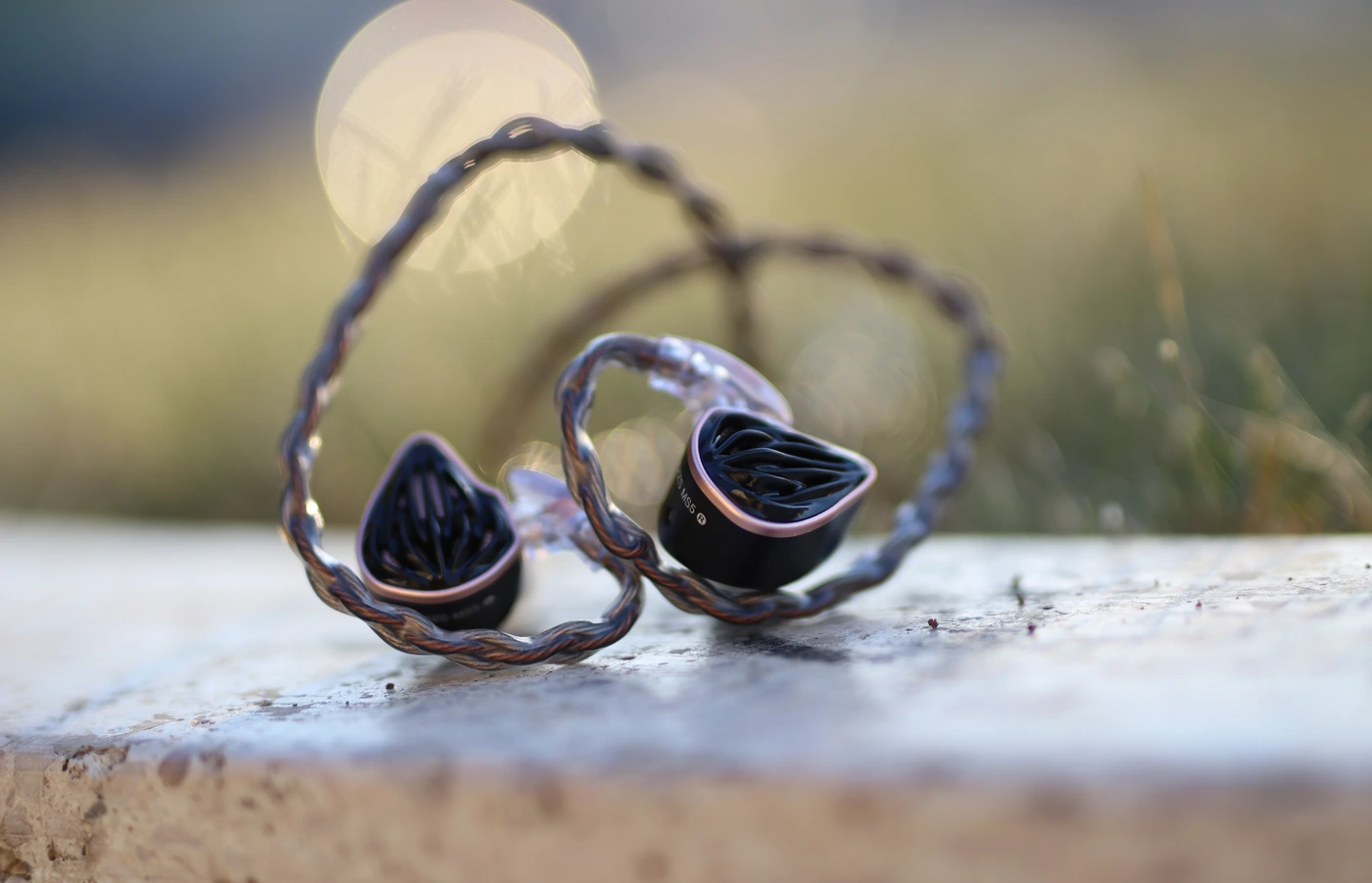
HIDIZS MS5 vs Westone MACH 60 (399 USD vs 600 USD) – Starting with the fit, we have a much deeper fit with Westone, and it is an IEM that can be more comfortable for some, but only if you don’t have any kinks in your ear canal. The shell of Mach 60 is lighter and smaller, but MS5 fits my average ears a bit better, and despite the fact that the cable coils a bit tighter around my ear, they sit more snuggly and feel better for long hours of wearing. Westone Mach 60 is much easier to drive, and far more sensitive to source noise and hissing, so you need a much quieter source for it. The overall signature of Mach 60 is far too dependent on the fit to be described easily, and even for me, it varies from a natural – mid forward IEM to a thickness king with great impact, while MS5 will sound very similar across all sources and even tip rolling barely affects the sound, since they have a very specific depth for the best fitting. MS5 generally sounds more natural, richer, more detailed, wider, and more holographic with better instrument separation and better dynamics. Mach 60 offers a higher degree of passive noise isolation, but MS5 is really good for isolation too, so it is a good middle ground to be used as a professional IEM for monitoring, despite the lower price. The cable of MS5 is obvious, you see it from far away, while the cable of Mach 60 is very incognito.
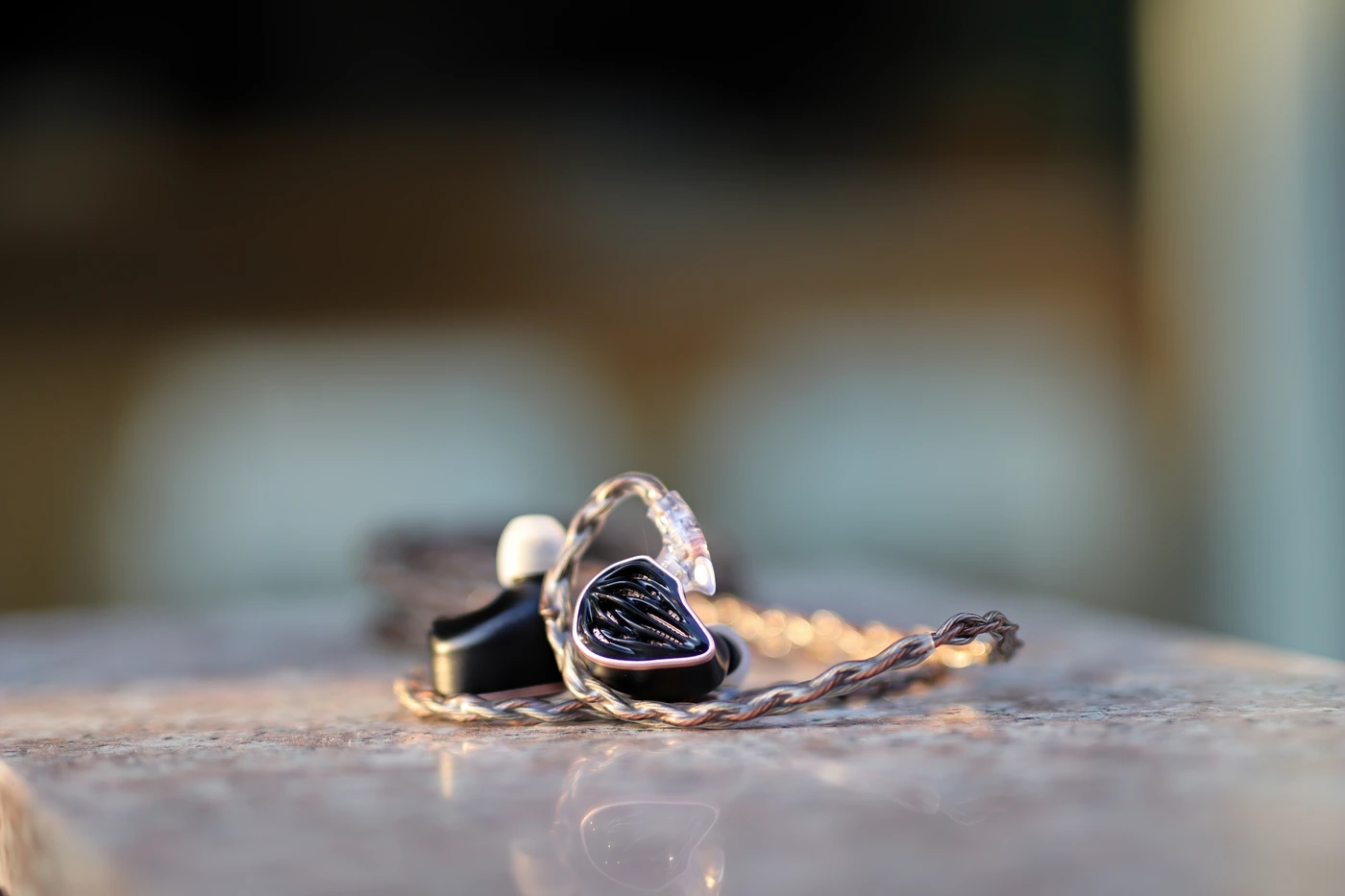
HIDIZS MS5 vs Xenns Mangird Tea2 (399 USD vs 349 USD) – The build is actually similar, although I find MS5 to be more comfortable, the fit is simply more natural, the shells are a bit smaller, and the tighter coiling around the ear keeps them more snug. Both are easy to drive, but tea2 is quite sensitive to the source noise and will show hissing as well as background noise, while MS5 is not very sensitive at all. The driving power needed to drive them is different, Mangird Tea 2 being much easier to drive. When it comes to the sound, we have a much more midrange – forward sound with Tea2, which has a very revealing sound in the mids, but MS5 has a much richer sound, with better bass, better impact, better dynamics, and a much wider soundstage. Mangird Tea2 is better if you know you want a midrange forward sound and prefer an absent bass or a linear one, and if you don’t want treble sparkle, while HIDIZS MS5 is has a deeper sound, better depth, and better sparkle in the highs too, being more engaging and more fun to listen to.
Value and Conclusion
The price / performance ratio of MS5 is insanely good, and it quickly became one of my favorite sounding IEMs, it is really impactful and has a good sense of dynamics, plus a natural soundstage, and a really nice high-end package with a practical transport case, and a selection of pneumatic filters if you want to tune the sound. Even in their default state, the performance is surprising, and they have detail and resolution to be competitive in the midrange market, showing that HIDIZS can totally keep up with the currently active IEM market, and making a good entry at that too.
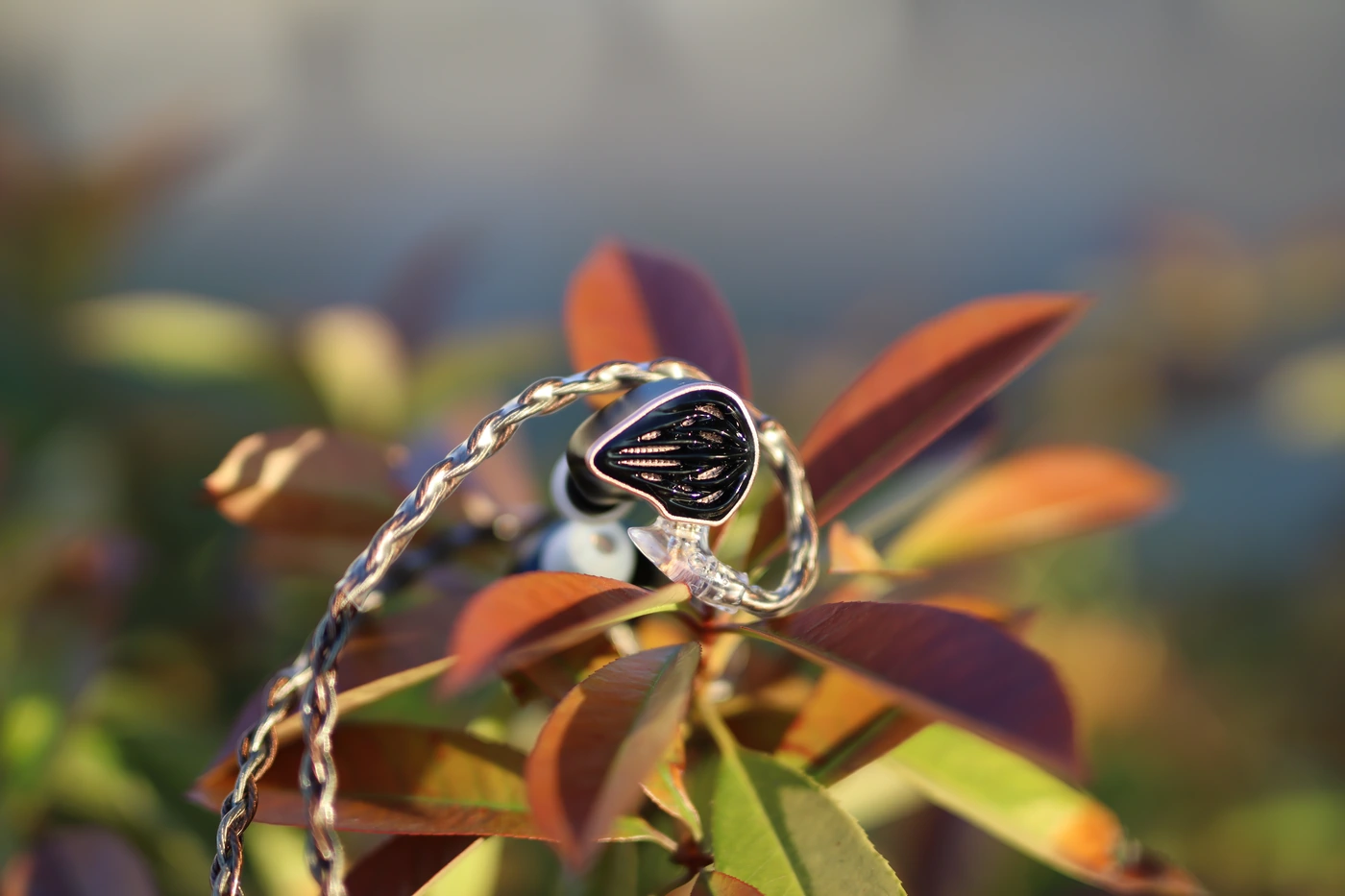
In fact, the MS5 is so great that it earns an Audiophile-Heaven Hall Of Fame award, and it surely is an IEM that you’d be happy to check out even a few years after this initial review, and one that will withstand the test of time.

At the end of today’s review, if you’re looking for a super energetic, powerful, and deep sounding IEM, with a slightly U-Shaped presentation, excellent dynamics and outstanding instrument separation, plus a really rich and detailed midrange, HIDIZS MS5 is one of the best you could wish for and a fully recommended purchase today.
Product Link
You can grab one from www.amazon.com here: https://amzn.to/45jsDNZ
If you’re in the UK, you can grab one from www.amazon.co.uk here: https://amzn.to/3QPa8wK
And if you’re from Europe, you can grab one from www.amazon.de here: https://amzn.to/3ONsZ8u
--- Please remember to stay safe, and always have fun while listening to music!---
- If you have a dime to spare, please donate, and help us! It would make the day brighter for me and my wife-
Full Playlist used for this review
We listened to more songs than those named in this playlist, but those are excellent for identifying a sonic signature. I recommend trying most of the songs from this playlist, especially if you’re searching for new music! The playlists are different for Spotify, Tidal and Youtube, and based on the songs I enjoy and are available on each!
https://www.youtube.com/playlist?list=PL_cjBXGmwSHSdGcwuc_bKbBDGHL4QvYBu
https://open.spotify.com/playlist/5J3oloz8Riy9LxEGenOjQ0?si=979ba4f082414be7
https://tidal.com/browse/playlist/330fd544-8e5b-4839-bd35-676b2edbb3d5
--- Contact Us ---






[…] them to other midrange IEMS with a similar price point, including Yanyin Canon II (379 USD), HIDIZS MS5 (399 USD), Westone MACH 40 (600 USD), Jomo Audio P3 Percussion (425 USD), and iBasso IT05 (299 […]
[…] compare the Canon II to other high-quality midrange IEMs, including Moondrop Blessing 3 (319 USD), HIDIZS MS5 (399 USD), and Westone Audio MACH 40 (600 […]
[…] them and comparing the Hype2 to other high-quality IEMs, including Moondrop Blessing 3 (319 USD), HIDIZS MS5 (399 USD), iBasso IT05 (299 USD) and Periodic Audio Titanium V3 (299 […]